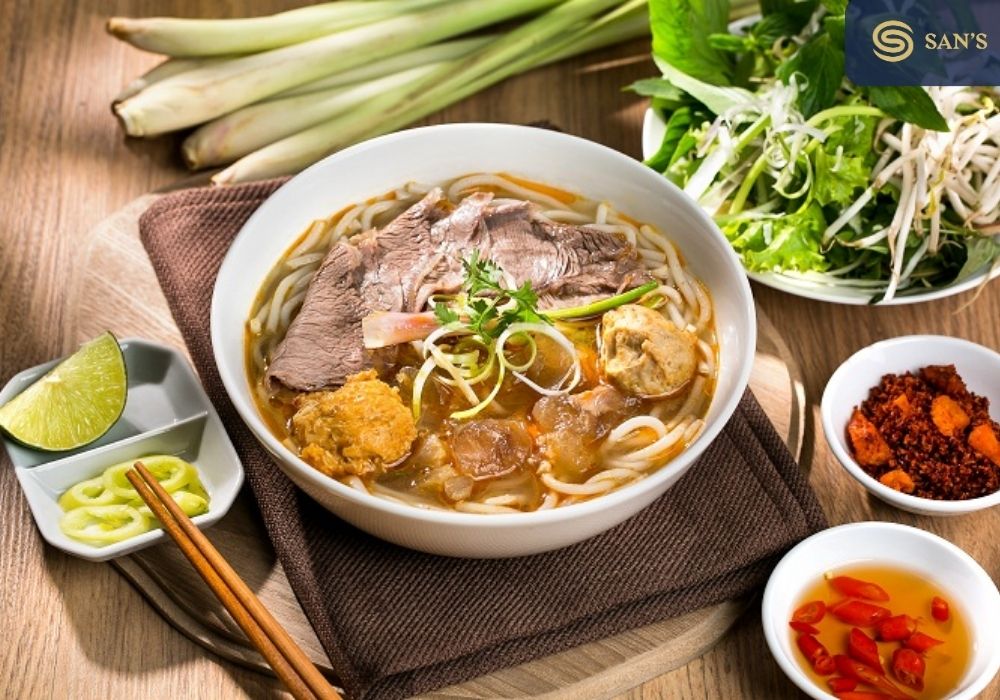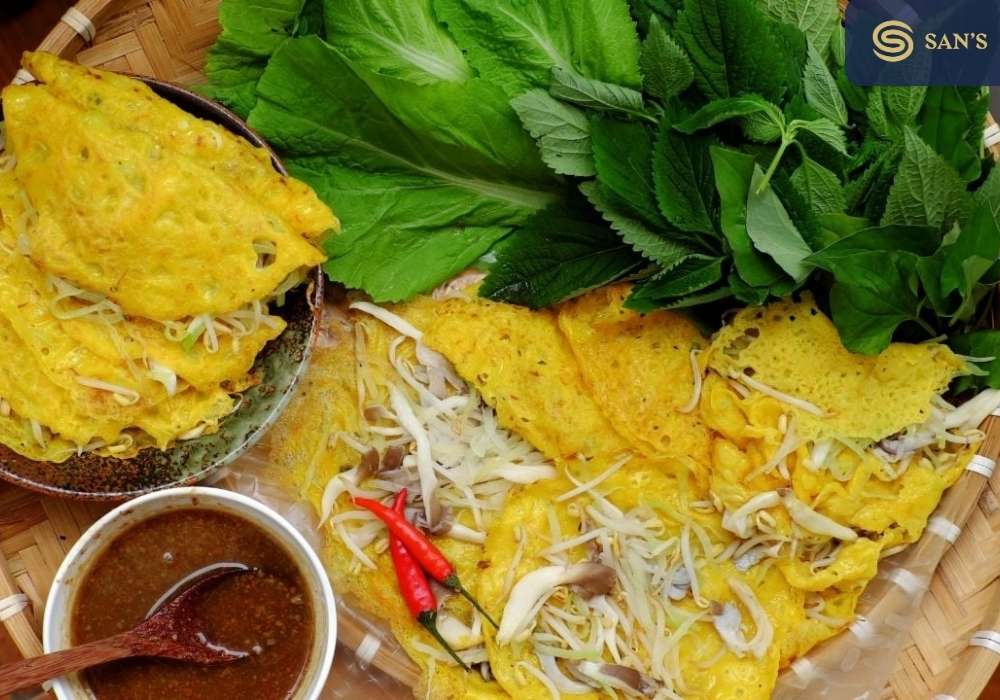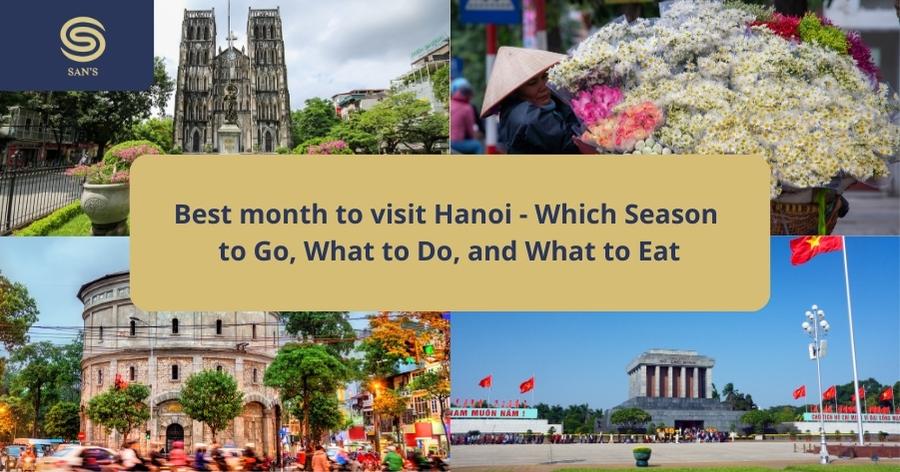Though international recognition of Vietnamese cuisine often centers around phở and bánh mì, traditional Vietnamese food offers a vibrant medley of unique textures and zesty flavors that go beyond these popular dishes.
The Vietnamese cherish their deep-rooted culinary traditions, harnessing the bounty of regional produce and distinctive ingredients to craft their delectable creations. The North is celebrated for its understated yet profound flavors, while Central Vietnam dishes out bold spices in hearty servings. The South, on the other hand, exhibits a fondness for a touch of sweetness. No matter where you venture in Vietnam, a feast of traditional delicacies awaits.
1/Phở
Phở, the emblematic dish of Vietnam, derives its name from the specific type of noodle incorporated into it. These flat rice noodles waltz amidst tender slices of medium-rare beef or succulent chicken in a robust beef broth.
The more renowned variant is the phở Hanoi, a northern original, characterized by its translucent broth and minimal garnishes: a hint of lemon and fiery bird’s eye chili slices. Its southern cousin, phở Nam, boasts a deeper-hued broth and is traditionally adorned with fresh greens including bean sprouts, basil, and mint.
-

Pho ga – traditional vietnamese food
The soul of an authentic phở is its broth. Typically steeped with aromatic star anise, clove, and cinnamon, the broth exudes a delicate sweetness. This traditional Vietnamese food staple graces almost every nook and cranny, often surprising many by being a breakfast favorite among the locals.
Where to Savor: Consider Pho Thin at 13 Lo Duc, Hai Ba Trung District in Hanoi or Pho Hoa at 260C Pasteur Street, District 3 in Ho Chi Minh City for an authentic experience.
2/Bánh Mì
In the rich tapestry of traditional Vietnamese food, the bánh mì stands out as a delightful blend of history and flavor. Though it borrows the baguette from French culinary traditions, its essence is purely Vietnamese. A swift application of paté and margarine lines the soft interior of the baguette.
-

Banh mi – traditional vietnamese food
This is followed by an array of ingredients: tangy pickled vegetables, aromatic cilantro, succulent pork belly, light pork floss, and fresh cucumber. The initial crunch of the crust reveals a harmonious interplay of textures and tastes inside, making it a must-try for anyone delving into the wonders of traditional Vietnamese food.
3/Bún Bò Huế
Hailing from the illustrious culinary heritage of Hue, bún bò huế stands as a powerful testament to Vietnamese culinary artistry. The broth, with its rich red hue, immediately captivates, revealing hours of patient simmering of beef bones and fragrant lemongrass, resulting in a tangy masterpiece.
-

Bun bo Hue – traditional vietnamese food
Accompanied by flash-boiled vegetables and melt-in-the-mouth beef shanks, it’s a dish that radiates energy and complexity. While its name clearly signifies beef — with “bò” being the Vietnamese term for beef — an unexpected twist lies in the addition of chả lụa. This sausage, crafted from ham paste, bears a texture akin to tofu, adding another layer to this traditional Vietnamese food delicacy.
4/Xôi
Distinct from other regional variations of sticky rice, Vietnam’s xôi offers a dense, hearty experience that can swing between savory and sweet. The savory version, known as xôi mặn, stands out as a favored, budget-friendly breakfast choice among locals. If you’re inclined towards a sweeter palate, the world of xôi ngọt unfolds with over 20 varieties.
-

Xôi – traditional vietnamese food
One particularly captivating type is the xôi ngũ sắc. This five-colored xôi presents a vibrant medley of purple, green, red, yellow, and white, with each hue derived naturally from plant extracts, making it not only a treat for the taste buds but also a feast for the eyes in the realm of traditional Vietnamese food.
5/Bún chả
Before its spotlight moment with President Obama and Anthony Bourdain, bún chả had long been a cherished staple in Hanoi’s Old Quarter. Come midday, the unmistakable aroma of pork sizzling over charcoal permeates Hanoi’s streets, beckoning to the appetites of its residents.
-

Bun cha – traditional vietnamese food
This quintessential northern delicacy is an ensemble of cold bún (rice vermicelli), flavorful slices of pork belly, an abundant heap of fresh herbs and salad, and, the highlight, minced pork patties luxuriating in a bowl filled with a fragrant fish sauce-based broth.
The ideal way to savor it is to dip bundles of bún into the broth, alternating bites between the noodles, pork, and verdant greens. It’s a traditional Vietnamese food experience that resonates with both locals and global gourmets alike.
6/Bánh Cuốn
Crafted from delicate sheets of steamed rice flour enveloping a filling of minced pork and wood-ear mushroom, bánh cuốn emerges as a culinary marvel. Always freshly prepared upon order, this savory masterpiece is adorned with crispy dried shallots and accompanied by a fish sauce complemented with pork sausage.
-

Banh cuon – traditional vietnamese food
To truly savor it in the local Vietnamese way, indulge in it for breakfast. And for an added zest, sprinkle some fresh herbs to elevate every mouthful of this traditional Vietnamese food treasure.
7/Bánh Xèo
Originating from the Mekong Delta, bánh xèo has found its way to plates throughout southern and central Vietnam. Witnessing its creation is a feast for the senses: the distinct “xèo” sizzle as the batter meets the hot pan and the rhythmic dance of the cook spreading the thick mixture, ensuring its crispy perfection.
-

Banh xeo – traditional vietnamese food
This vibrant yellow crepe, tinted with turmeric, is traditionally crafted from rice flour and coconut milk. Drawing inspiration from the French, this savory pancake is generously stuffed with boiled pork, minced pork, bean sprouts, and shrimp, and then elegantly folded. For the best taste of this traditional Vietnamese food, relish a bánh xèo fresh from the pan, where its crispy essence truly shines.
8/Nộm Hoa Chuối
Nộm hoa chuối is a dazzling showcase of banana flowers, finely shredded and mingled with pickled carrots, coriander, lotus root, and cabbage. Depending on the season’s bounty, bursts of pomelo and slivers of green mango or papaya join this vibrant medley. While some renditions feature chicken, beef, or shrimp, it can equally shine as a vegetarian ensemble.
Brought together by the signature nước chấm sauce and garnished with crunchy peanuts and fiery bird’s eye chili, a squeeze of lime adds the final zesty touch, making this salad an epitome of traditional Vietnamese food’s freshness and complexity.
9/Cơm Tấm
Once the unsellable remnants of rice crops, broken rice has evolved into a staple for Vietnam’s bustling workforce, exemplifying the resilience and creativity of its people. Today’s cơm tấm, though rooted in simplicity, boasts layers of rich flavors.
-

Com tam – traditional vietnamese food
The iconic “cơm tấm sườn nướng ốp la” features a perfectly fried egg alongside a caramelized grilled pork chop, all resting atop a bed of the cherished broken rice. Draped in nước chấm – a tantalizing blend of chili, fish sauce, and sugar, and a sprinkle of green onion oil, this dish is a symphony of textures and tastes.
Garnishments of pickled carrots, daikon, crisp cucumber, and tomato slices add freshness, while the crunch of fried pork rinds and shallots provides a final, flavorful flourish to this traditional Vietnamese food masterpiece.
10/Chè
Embracing a delightful blend of textures and flavors, chè stands out as a cherished dessert in Vietnamese culinary tradition. Whether served warm as a comforting pudding or cold, providing respite from the tropical heat, every spoonful of chè promises a unique taste experience.
-

Chè – traditional vietnamese food
Cold variations typically showcase a vibrant medley of tropical fruits like banana, mango, and longan, all enriched with creamy coconut essence. Diving into a bowl, one might discover unexpected treasures like coconut shreds, cool crushed ice, nutritious lotus seeds, and playful jellies.
For a truly kaleidoscopic treat, the chè ba màu, or “rainbow dessert,” layers red beans, smooth mung bean paste, and vibrant pandan jelly, crowned with ice and a generous pour of coconut milk, making it a must-try in the realm of traditional Vietnamese food.





